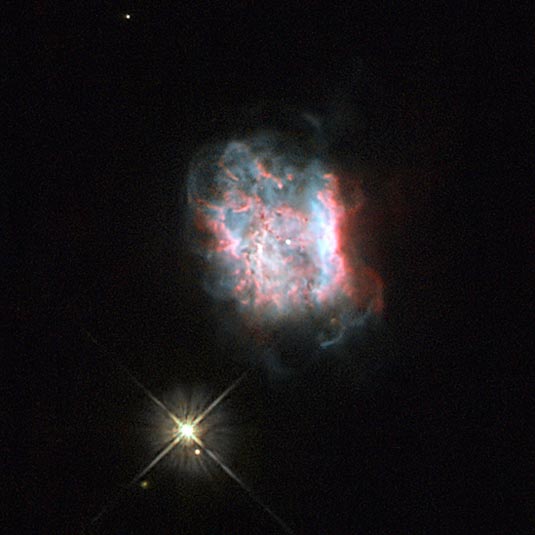
Planetary Nebula
RA 06hr 25m 57.237s Dec +17° 47' 27.53"
Gemini
16,200 light-years
12.4
12"x10"
ESA/Hubble & NASA, Ack: Josh Barrington
March 25, 2013
ABOUT THIS IMAGE:
The object in this image is Jonckheere 900 or J 900, a planetary nebula — glowing shells of ionized gas pushed out by a dying star. Discovered in the early 1900s by astronomer Robert Jonckheere, the dusty nebula is small but fairly bright, with a relatively evenly spread central region surrounded by soft wispy edges.
Despite the clarity of this Hubble image, the two objects in the picture above can be confusing for observers. J 900’s nearby companion, a faint star in the constellation of Gemini, often causes problems for observers because it is so close to the nebula — when seeing conditions are bad, this star seems to merge into J 900, giving it an elongated appearance. Hubble’s position above the Earth’s atmosphere means that this is not an issue for the space telescope.
Astronomers have also mistakenly reported observations of a double star in place of these two objects, as the planetary nebula is quite small and compact.
J
900’s central star is only just visible in this image, and is very
faint — fainter than the nebula’s neighbor. The nebula appears
to display a bipolar structure, where there are two distinct lobes of
material emanating from its center, enclosed by a bright oval disc.